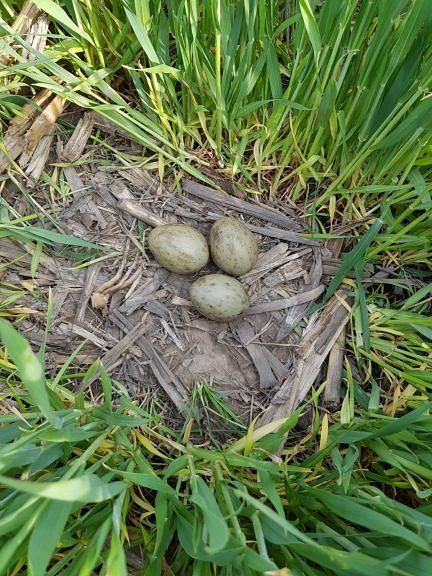The great bustard is nesting again in Romania, local NGO says

The great bustard (Otis tarda), the largest flying bird in Europe, is nesting again in Romania, the Association for Bird and Nature Protection “Milvus Group” announced.
“After several decades, we finally have the proof that the great bustard nests in Romania! It took us 13 years of fieldwork and maybe a little luck to get this confirmation,” the NGO said in a press release, according to Digi24.
The Association shared a photo of a great bustard nest taken last week by Ioan Matiu jr., a veterinary medicine student. He discovered the nest accidentally in Salonta, in Bihor county, while doing agricultural work.
“For us, the Milvus Group Association, this photo has a historical significance. It proves the nesting of a species once considered extinct in Romania and, at the same time, shows us the importance of fieldwork, the involvement of locals and local administrations in nature conservation, but also the need to streamline agri-environment programs to provide attractive compensatory payments for farmers looking after the bustards,” the NGO said.
Classified as a globally vulnerable species, the great bustard has experienced an overwhelming decline following the fragmentation of its former habitats - the Eurasian steppe. By the mid-1950s, it had disappeared from most of Europe. This was also the case in Romania, where, following nationalization, the meadows (its natural habitats) were plowed and transformed into agricultural crops, the Association explained. The mechanization of agriculture and hunting, respectively poaching, also contributed to this decrease.
“If in the 19th century there were stable populations in Banat, Crișana, the Transylvanian Plateau, the Romanian Plain, Dobrogea and in some places in Moldova, according to the hunting funds of 1988, there were about 48 specimens in the whole country. Thus, after 1990 it was considered a species that is extinct from the fauna of Romania,” the NGO also said.
“On the other hand, we have every reason to believe that in Salonta (Bihor), they have kept one last center of resistance. Our field observations over the last 13 years confirm that there is a small cross-border population of about 40 specimens here, using territories on both sides of the Hungarian border in the Salonta-Mezőgyán area.”
newsroom@romania-insider.com
(Photo source: Milvus.ro)













